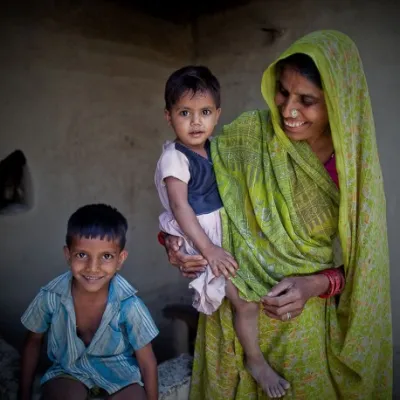The Nature of Maternal Mortality in the Developing World

With around 385,000 babies born everyday in an increasing global population, specialized maternal care becomes critically important for the health of expecting mothers and for their children. However, according to the World Health Organization (WHO), about 300,000 women die each year (maternal mortality) from pregnancy-related complications and up to 20 million suffer from life-threatening diseases (severe maternal morbidity). In addition, 94% of all maternal deaths take place in low and lower middle-income countries. What makes maternal mortality a very significant public health issue is that about 60% of deaths associated with pregnancy are preventable by paying careful attention to the mother’s health at three stages: during pregnancy, at delivery, and postpartum.
Access to high-quality prenatal care is essential throughout pregnancy, as well as enhancing awareness about managing chronic conditions. In addition, specialized healthcare professionals and equipment are a must during delivery. Finally, postpartum care allows mothers to monitor their overall health and to ensure that no physical complications emerge after the baby is born.
However, low-income countries are generally limited in the aforementioned fundamental advantages. In particular, there is a lack of awareness about maternal health, along with poverty, illiteracy, and difficult access to adequate health care. More importantly, these countries are in dire need of assistance because, on average, women in underdeveloped countries have a higher number of pregnancies than women in the industrialized world. Therefore, lower-income countries are at the forefront of the maternal mortality crisis and must be supported with valuable knowledge as well as essential resources.
Successes and Future Directions
Policies and programs that are focused on improving maternal health in the developing world should consider the influence of socioeconomic factors, as well as the functionality of various healthcare systems to give women the optimum maternal care that they need. It is also important to note that various developing countries have been successful in reducing their maternal mortality rates. For instance, Sri Lanka reduced the number of maternal deaths from between 500 and 600 deaths per 100,000 live births in 1950 to 60 deaths per 100,000 live births in 2009. According to one of several case studies in Millions Saved: Proven Successes in Pubic Health, the following are major contributing factors to this dramatic decrease in the maternal mortality rate: broad access to a strong health care system, the professionalization of midwives and other skilled birth attendants, and the organization of health-related data for policy-making.
Zambia is another country whose maternal mortality rate has dropped significantly, from between 577 and 598 deaths in the 1990s per 100,000 live births to 224 deaths per 100,000 births in 2015. Zambia’s progress has largely been due to the development of national maternal health programs. Similar to Sri Lanka, Zambia’s initiatives prioritized maternal health through additional funding of public health projects, skillful training of nurses and midwives, and careful analysis of relevant health information.
These invaluable accomplishments in the developing world clearly emphasize the fact that collaboration between various sectors, ranging from education and healthcare to the economy and the government, is beneficial in enabling efficient maternity care. Furthermore, by using a similar framework as that implemented by Sri Lanka and Zambia, there is a potential to save the lives of some of the most important individuals in global society: our mothers.
Sources:
https://obgyn.onlinelibrary.wiley.com/doi/pdf/10.1111/aogs.13356
https://ourworldindata.org/hannahexemplar
https://www.givewell.org/international/technical/programs/maternal-mortality
https://mhnpjournal.biomedcentral.com/articles/10.1186/s40748-017-0059-8
https://www.who.int/news-room/fact-sheets/detail/maternal-mortality
https://www.cdc.gov/vitalsigns/maternal-deaths/index.html